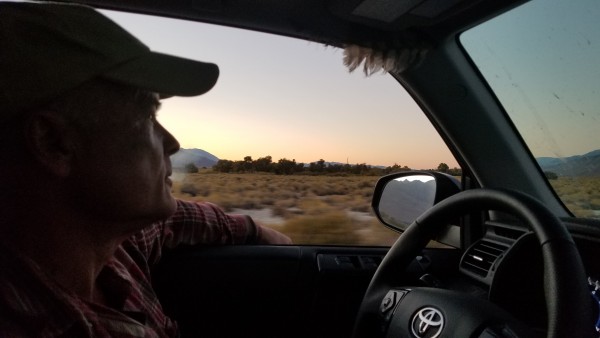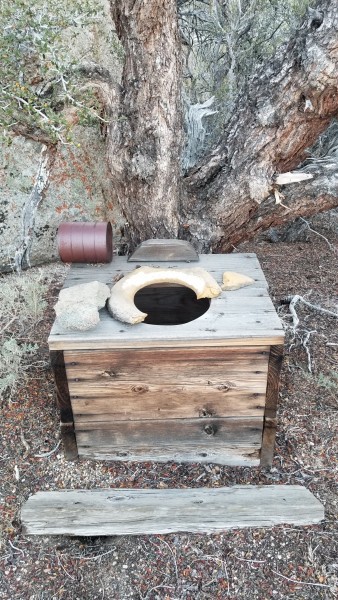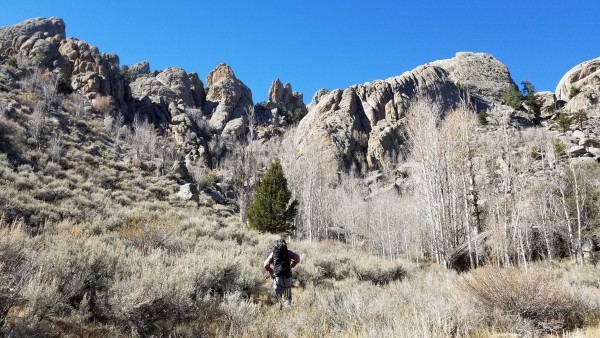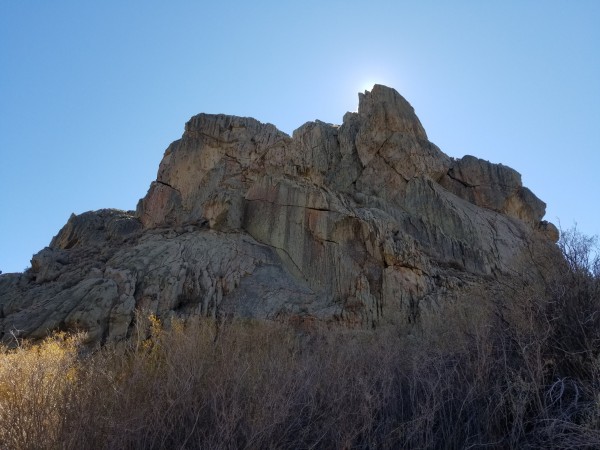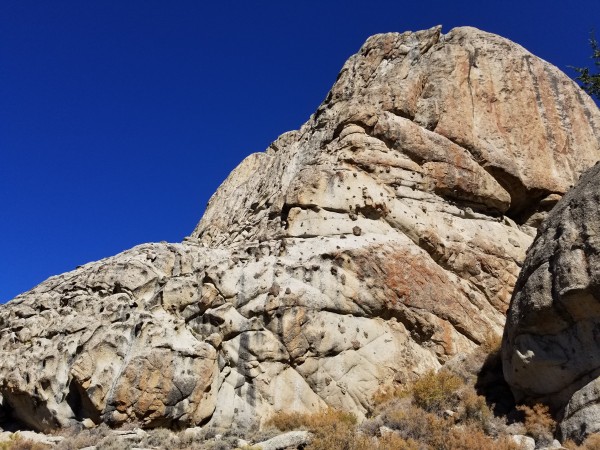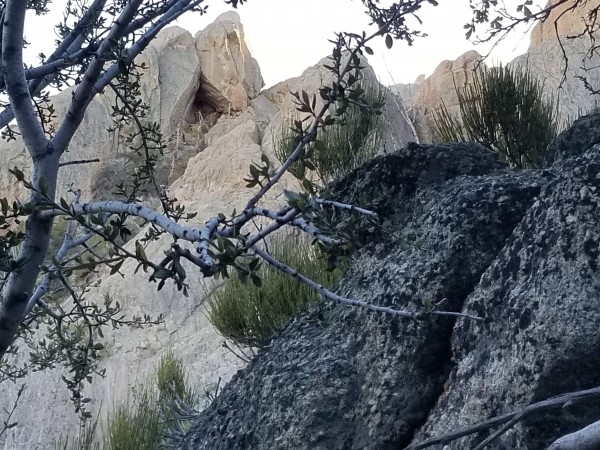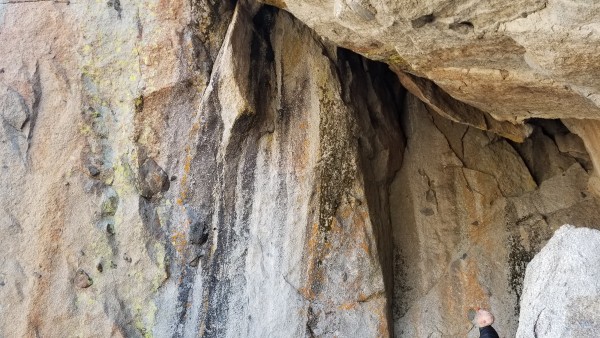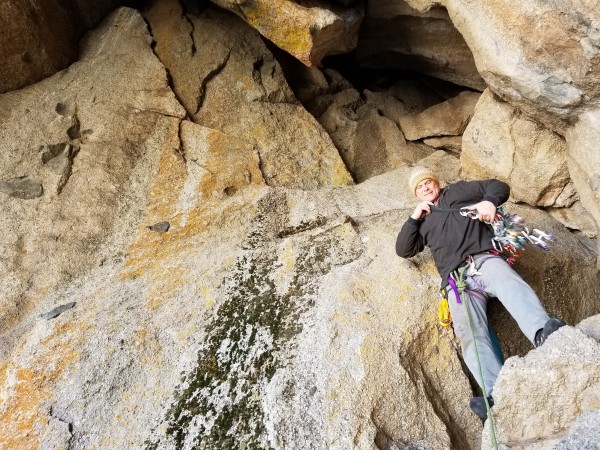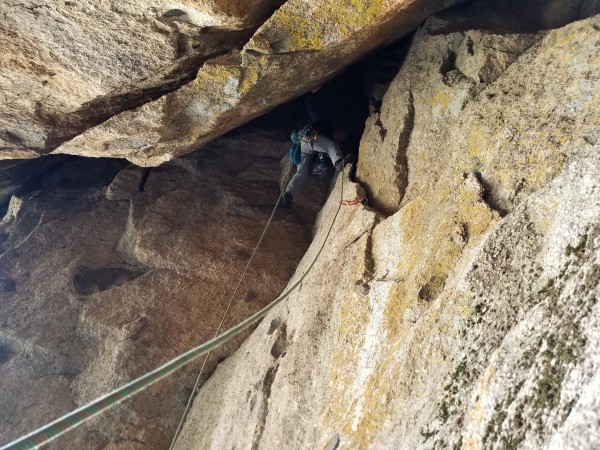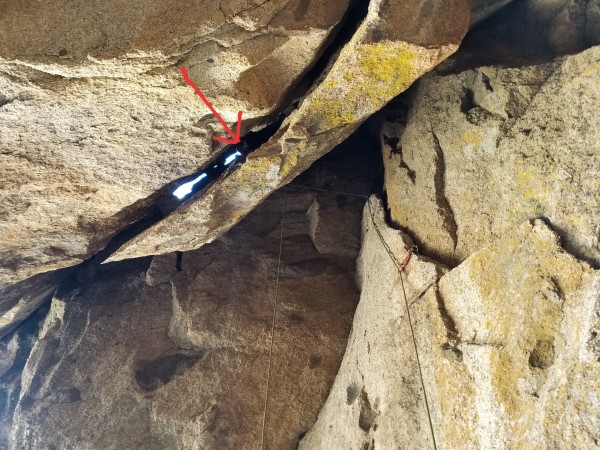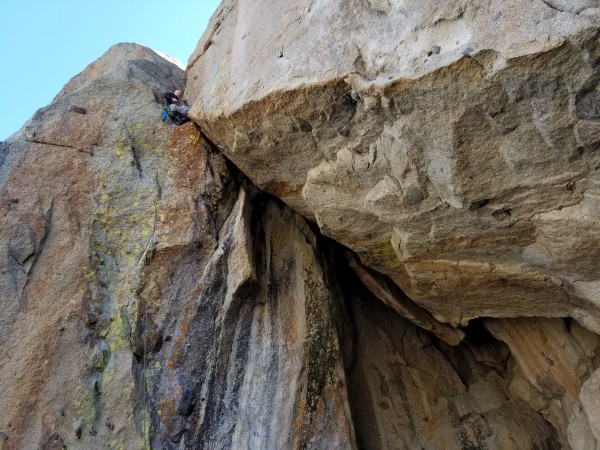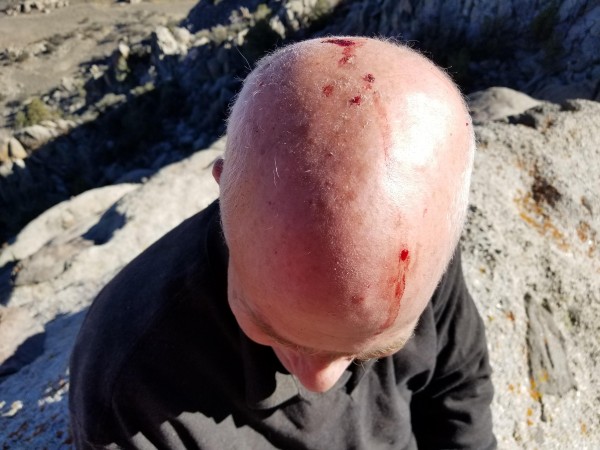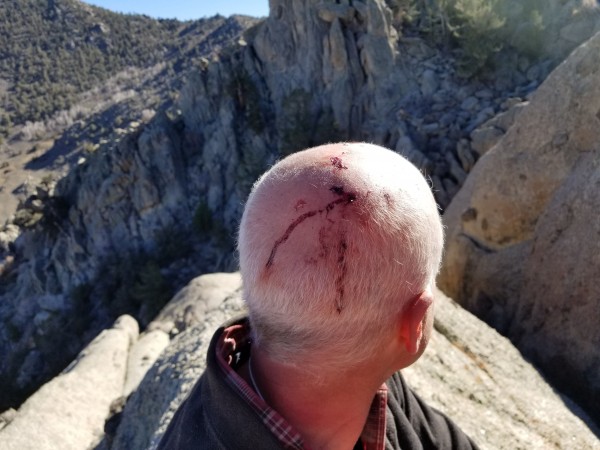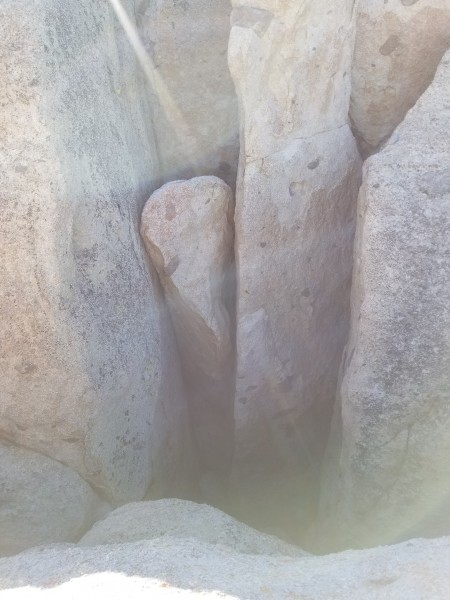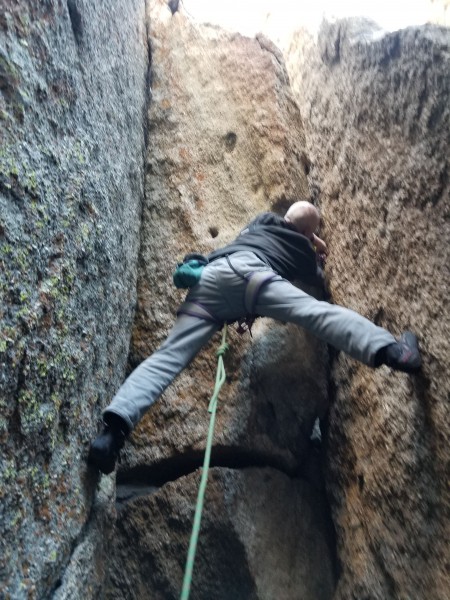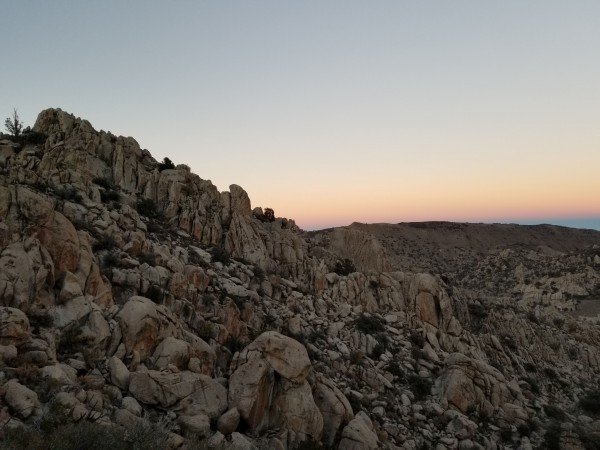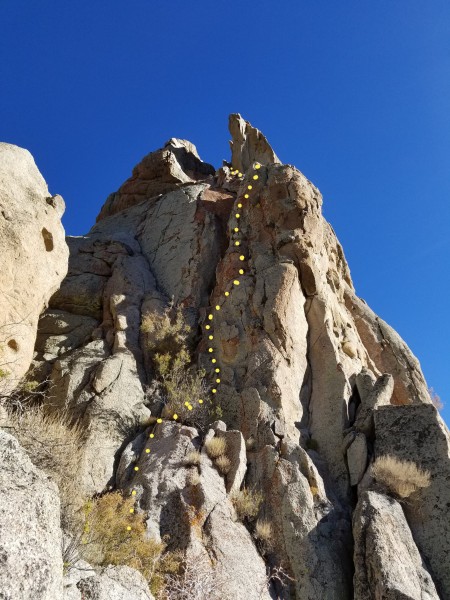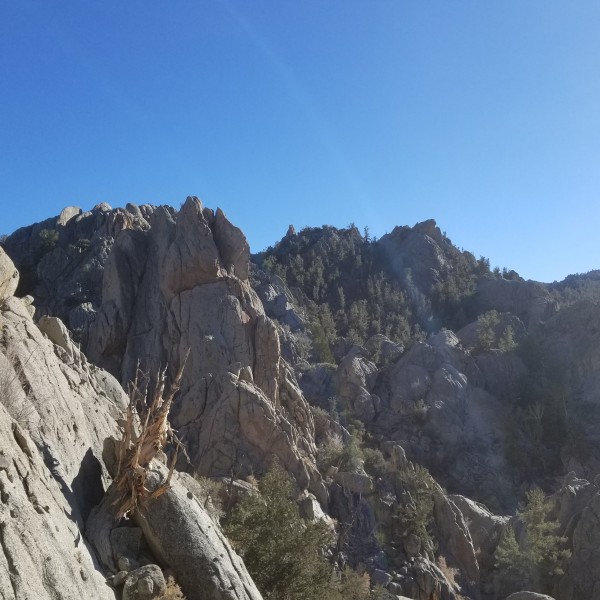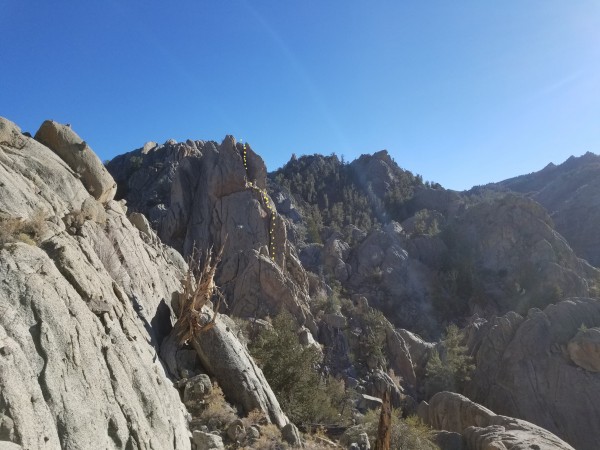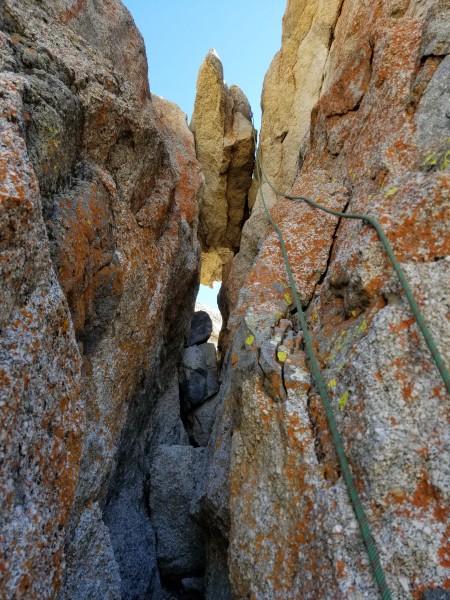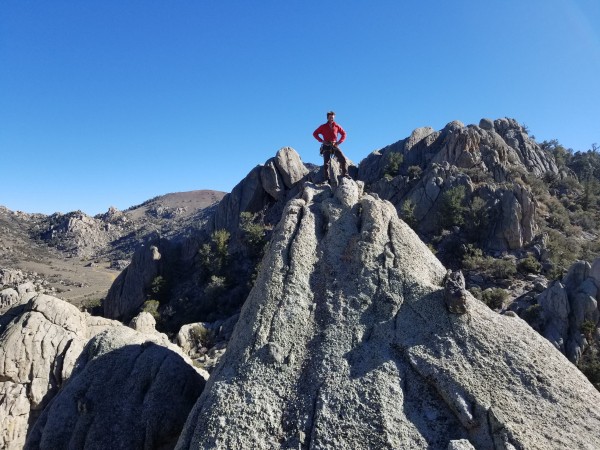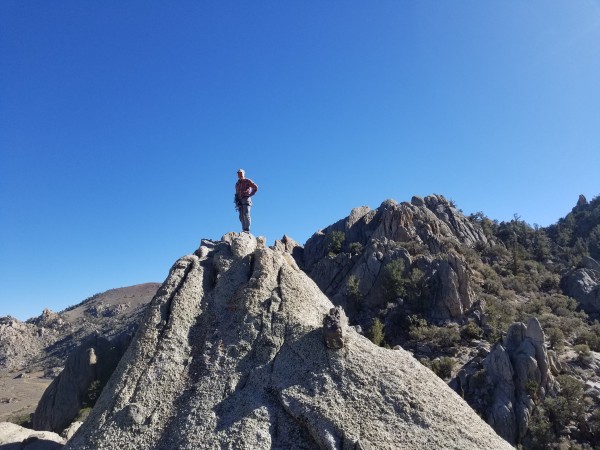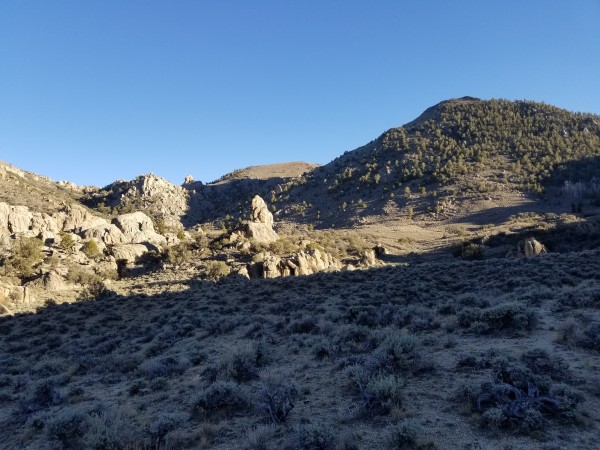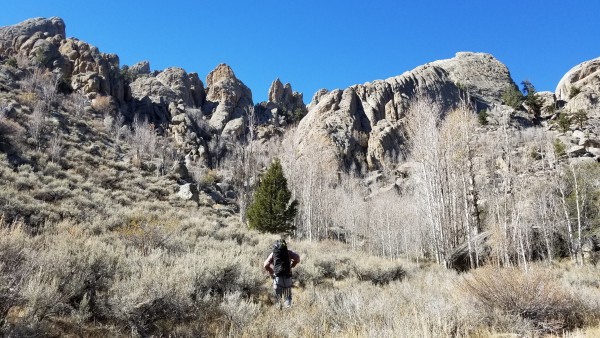“A little bit of luck works out once in a while.”
But to that I ask,
When does the well run dry?
For now, I will disregard my usual sense of drama, and offer to you my most arid trip report yet.
This trip report is about finding first ascents with Elliot in places that are, for the most part, vastly unexplored. They exist all over California, they are small, and they are remote. Two specific locations were explored, the first is called “The Bachar Lands,” and the second is called “The Ostrov.”
Here is some back story:
Shortly before John Bachar passed, he and one Scott Loomis were passing around KMZ files that pinpointed areas with potential for climbing. Today, Loomis seems to have the proprietary key to knowledge in this regard, and for his sake (as well as the sake of the remote nature that these crags enjoy), I am sworn to a certain level of secrecy regarding their exact location.
Elliot and I have agreed to call these locations part of “East Side South.”
Part One: The Bachar Lands
The Bachar Lands, the first region explored, required some amount of driving on the 395, an Eastern turn, and then two hours of rugged off road driving before reaching camp. From camp, a 1.5-2 hour hike is required to reach the climbing area(s).
Some more backstory is required for The Bachar Lands. During a previous visit with another friend, Elliot had brought his Mitsubishi 4x4 SUV. It was a nice car, though it unfortunately leaned more towards luxury than reliability. On the way out, he popped all four tires, drove for several hours on metal rims, and damaged the suspension so badly that the car was deemed “totaled” entirely. He had bought it new, and only owned it for a short time.
He soon procured a brand new, Toyota 4Runner (with TRD of course).
During our slow march into the ever jagged roads, we kept remarking about how we felt as “Mariners of Soil,” sailing slowly across our tanned landscape as ever growing rocks and walls began to appear in the headlights. We also extrapolated the philosophy to climbing itself, though its soil is much harder… substrate is substrate. Climbing up and away from the civilized world, one enters a place where they truly do not belong. We do not belong on the water, we do not belong in it. We do not belong on giant peaks, and we do not belong on walls. SCUBA Divers, Sailors, Mountaineers, Climbers… we all seem to share a need to be where we shouldn’t.
But I digress.
Before long, we were running around the 4Runner, making fire, sipping whiskey, and chaining cigarettes. No tents: we lay out a tarp, and threw down our bags and pads (a little luxury never hurt). Lows were in the upper 20’s, and highs were forecasted for upper 40’s to mid 50’s Fahrenheit. I left my water bottle out of my sleeping bag the first night; I did not make the same mistake on the next.
In the morning, we met the only other humans we would see for the next few days: hunters. Deer season was scheduled to open the next day, and these guys had ridden out on their buggy to scope out the area. We welcomed them to our fire, and joked that the possibility of getting shot was miniscule, given that where we proposed to be climbing was far too away from wherever they were willing to leave their vessel.
After breakfast we geared up. A double rack, and some bolting equipment were carried for nearly two hours into a realm that I could only describe as a cross between Pinnacles National Park and Tuolumne Meadows. The formations we encountered were jagged, knobby, and very Pinnacles-esque, though granite reigned supreme here. Surely, years of climbing were to be had for anyone willing to commit so much effort into seclusion.
Suddenly, Elliot was pointing at “our” project.
What Elliot and I were heading towards was a cave. Imagine a large cabin with a triangular roof, about fifty feet tall. Now imagine the three dimensional shape of that cabin cut into the mountain. Three feet of bat droppings indicated that our depression was the domain of a large bat colony, but they seemed to have business elsewhere given the onset of a threatening winter.
At the apex of the cave was a roof crack, where one could employ a combination of hand jams and chimney-technique, as the constriction ran horizontally out for thirty feet before sweeping upwards. I will allow the photos to describe the proposed route better.
Without any hesitation or hint of doubt, Elliot merely racked up. After a few cigarettes, we decided bolts would not be required, and such gear was left at the base.
What scared me, was a giant “hanging tooth” that hung like a stalactite from a constriction above. Imagine now, a flake about thirty feet long, one foot thick, and about ten feet wide. It hovered from either side of the walls about two feet in space.
I did NOT trust that thing to be solid, given its appearance.
Next thing you know, Elliot is on lead, and chimneying up behind the flake and the main wall of the cave, declaring the flake “solid.” After about thirty feet of elevation, he discovered a most auspicious cavity in the tooth, that allowed him to tunnel through (head first and downwards!) before achieving the roof crack. A combo of stemming, stretchy hand jams, squeezes, and contortions soon found him outside the cave where the crack swept upwards.
Rope drag was a huge problem by then, and Elliot was forced to hang on a piece of protection for a moment before pulling the last few moves to an awkward- yet more than acceptable- belay stance.
Following the roof crack was not easy. Tunneling through the flake was the first challenge.
“Hey Elliot! Did you go feet first, or headfirst through the hole!?”
“Head first!!”
Holy sh#t, I thought to myself. I was twenty feet off the ground in a dark compartment behind the tooth in the cave, looking DOWN to a hole about two feet in diameter. The flake seemed to sweep outwards, allowing me to crawl a few feet before standing up in the ceiling’s sharp apex.
The next crux was where the apex constricted. My body was forced as low as possible to a point where I could no longer reach the roof crack above me. I had to take my helmet off to fit my head through the pinch, and I could not see what my next holds would be until fully committed. Surpassing this section took me roughly ten minutes of attempting and backing off until I no longer cared about the pendulum fall potential towards a piece of protection that seemed just a LITTLE too far away.
“I can’t believe Elliot led this.”
Soon, I was hanging in the exact spot where he hung, rested a second, and made my way up to the belay. A quick cigarette was had, and I was handed the rack. I pushed the route about fifty feet higher following a 5.6 hand crack that abruptly widened into a 5.6 offwidth. I made a belay, and soon Elliot joined me on the spacious ledge.
One more pitch was required to escape the formation, and it actually required a downward traverse to reach the base of a Bombay chimney that shot upwards to a chockstone about twenty feet up. After surpassing the chockstone with some 5.8 offwidth climbing that Elliot called 5.7, we were able to find a path to scramble down an around the formation back to our gear. Elliot led this last pitch. We called the route “Wild, Wild West” and deemed it 5.10+.
After a few more smokes, we decided we had had enough for the day, and that we would carry all of our gear back to camp. A shortcut turned out to everything but, though we did find the car after about two hours, so not much of a loss was had.
The next day, we ventured another hour passed the cave, eyeing formations of all shapes and sizes, until one caught our eye. If you have ever been to Pinnacles National Park: think “Condor Crag.” A large pinnacle, split at the top, hosted a large chockstone that bridged the two distinct peaks. Each summit resembled the skull of a vulture from a different angle, and we called it “Vulture Rock.” From the ground, I estimated the pinnacle to require at least two full pitches, but Elliot assured me that it would only require one. I could not believe him, but my disbelief fell to the wayside when he asked me,
“Are you going to bring the five inch cam?”
“What, you think I’m leading this???”
“Oh yeah, you really should.”
“Jesus Christ.”
There I was, racking up, scared witless. Peer pressure is a bitch.
I headed up an easy chimney for a ways, and was able to find protection after about thirty feet of climbing. By that time, I was able to escape the chimney onto prominent broken flakes out right. Though quite steep, the features were easy enough that the climbing could only be called 5.6. Despite healthy runouts, I was enjoying myself.
After the first seventy feet of climbing the chimney and flakes, the formation cleaves to form a larger chimney, about three to five feet wide and about forty more feet before gaining the chockstone. Easy chimney-technique brought me to thankful protection under the wedge, and two 5.7 moves were required to surpass it and gain the summit.
I was stoked.
Elliot originally called the climbing 5.6, so perhaps it really was, but by the end of the day, he was calling it 5.7, a small victory for little-old-me. I named the route “Buzzard Bait.”
Two rappels were required with our 70m rope to reach the ground, and even after climbing it, I still could not believe I had climbed the formation in a single pitch.
… And a single pitch was all we needed to deem the day a success. We packed up, and made our way back to camp. One the way, the sunset illuminated a very small pinnacle, about fifty feet high, and Elliot and I both were drawn towards it… perhaps one more pitch couldn’t hurt?
After examining the rock, we deemed it best done as a free solo, and Elliot graciously offered for me to climb it first. A single 5.8 boulder move off the deck led to 5.4 climbing to the summit. We named it “Open Season Pinnacle.”
No bolts were added to The Bachar Lands.
---
Before I knew it, we were done. Four days off, with a 10 hour commute from Monterey meant only two days of climbing. We spent one more night under the frozen stars, and finished our cigarettes and whiskey.
It was absolutely worth it.
Stay tuned for Part Two: The Ostrov...
